|
Oregon
wine country, part 9
Beaux Frères
Website: www.beauxfreres.com
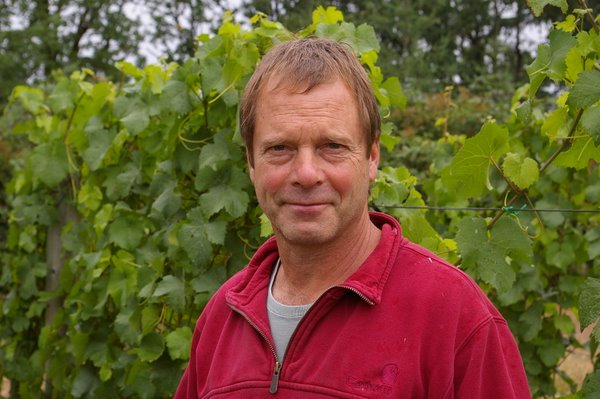
Michael
Etzel
Beaux Frères is one of the most talked about Oregon
wineries, in part because it is co-owned by the world’s most
famous wine critic, Robert Parker.
The story began in 1986 when Michael Etzel identified a
pig farm in Ribbon Vale as a promising vineyard site, and went into
partnership with his brother-in-law Robert Parker with a goal to
producing world-class Pinot Noir. The first grapes were harvested in
1990, and in 1991 a third partner, Robert Roy, joined in to help
make the venture financially viable and to help them build a winery.
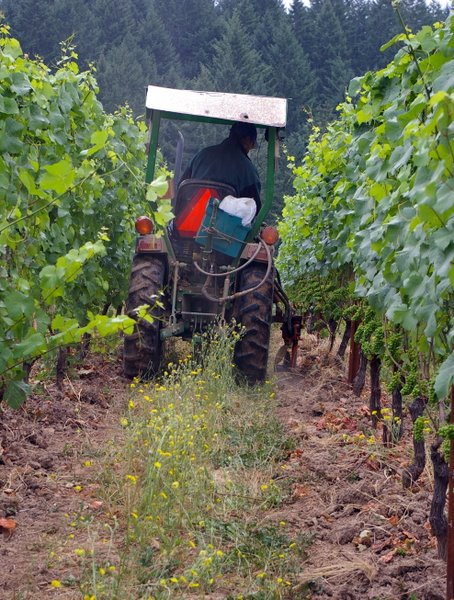
There are now two vineyards, the 23 acre Beaux Frères
Vineyard and the 10 acre upper terrace planted in 2000, which
produce around 105 tons a year. Both are farmed biodynamically. In
addition, another 20 tons of grapes are brought in to supplement the
estate fruit. 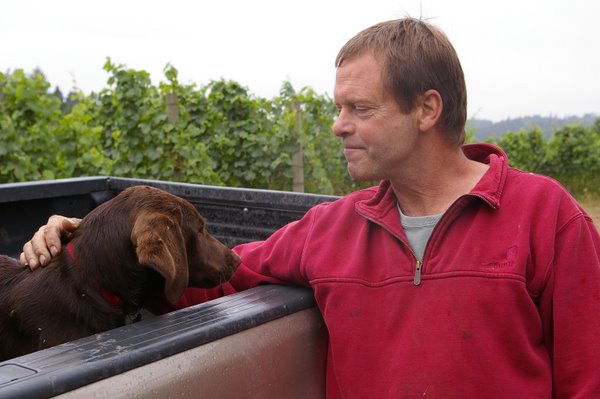
Michael
and Earl
The Beaux Frères vineyard was originally planted in
1988 with Pommard and Wadenswil clones on their own roots
(phylloxera was only discovered in Oregon in 1989, and there are
still many ungrafted vineyards in the state, some of which are
showing signs of succumbing). The upper terrace is planted with a
range of Pinot clones, and this is the vineyard I visited with
Michael and his brown Labrador puppy is 13 weeks old, called Earl.
Most of the property is still woodland, and it has a
wonderfully peaceful feel to it. Michael and his wife live on the
property, in a clearing in the woods.
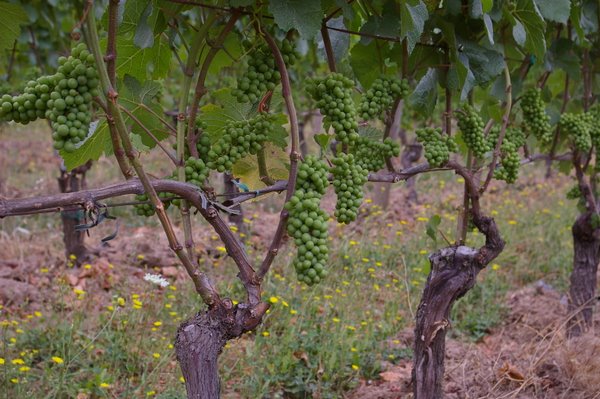
We first stopped to look at one of the three compost
heaps. Michael uses an old fire truck to water them, and these heaps
need 1000 gallons every couple of weeks to help them do their thing.
The aim is to get the internal temperatures up to 140–160 °F.
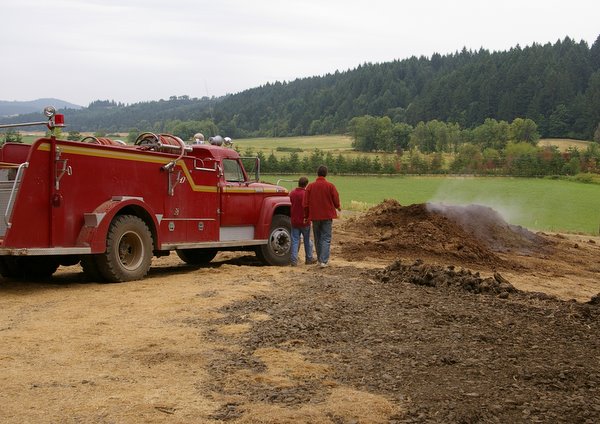
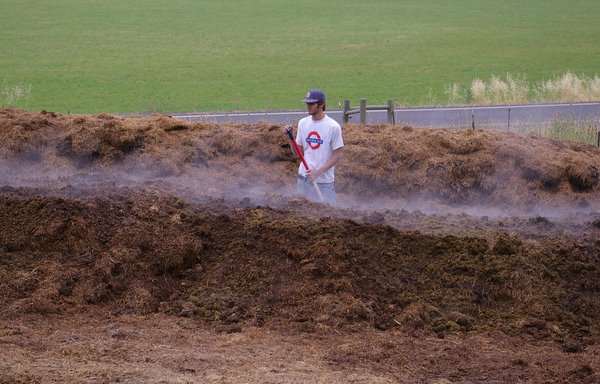
In the vineyard, vine spacing is 4 × 6 feet, and no
irrigation is used. Biodynamic preparation BD501 (horn silica) is
sprayed three times a season. Cover cropping is employed, and a
diverse range of plants are used so that something is in flower all
the time, which is great for the insect life.
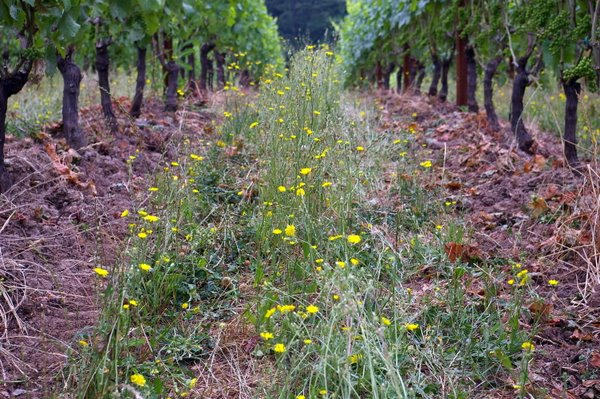
In the upper terrace Michael shows me his Grenache.
‘Bob Parker loves Rhône wines’, he explains, and this is the
reason for trying this variety that – as far as I’m aware – no
one else grows in Oregon. The cuttings are from iconic Châteauneuf-du-Pape
estate Rayas and altogether there are 17 rows, with some 1500 vines.
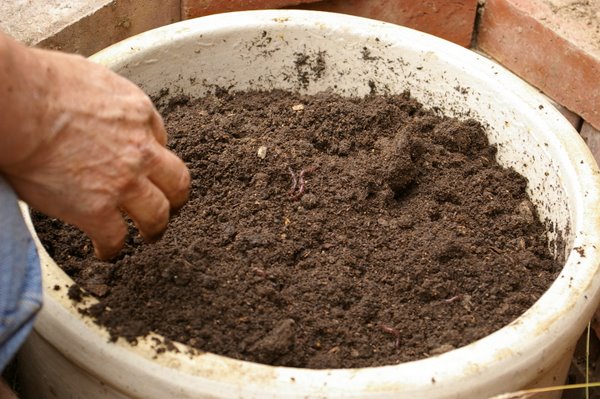
We also had a look at Michael’s barrel compost (above):
just a handful of this is used in five gallons of water for each
acre. It’s made from cow manure, treated with the usual
preparations and some egg shells, and fermented in a pit for a few
months.
‘Biodynamic farming with all the soil aeration helps
refine the tannins, to give you the highest quality tannins that
carry the delicate fruit from mid-palate to finish’, says Michael.
‘This illustrates to me the benefits of farming biodynamically’.
In the winery, fermentation is quite straightforward,
with the grapes being cooled down to 12 °C and then fermentation
beginning after five or six days. There are two pumpovers per day,
and then when fermentation begins, the cap is punched down. Michael
doesn’t uses whole bunches much, but he says this is a way to slow
fermentation down a bit. The temperature is kept below 25 °C, and
in some years (such as 2007) the must is chaptalized after the peak
of fermentation is over. ‘I hate nutrients’, says Micheal.
‘They steal the wine of any identity and character’. The wine is
pressed to barrel where it stays for a year without racking.
Bottling occurs without fining or filtration. Michael adds that,
‘we like a little reduction in the wines; it helps build
character’.
We tried some barrel samples of the 2007s.
1. Pommard clone: the second one brought in, this was
slightly chaptalized. Quite structured and pure with lovely fruit
intensity.
2. Dijon clone 115. Very bright, light and spicy with
great freshness and purity.
3. 113 clone. Powerful, pure and fruit driven with
spicy structure.
4. Old block, 20 year old vines. Michael says this is
‘My favourite: it has all the characters of great Pinot Noir’.
Lovely freshness: bright fruit, good length, some spiciness and real
precision.
5. Michael reckons that it’s important that Pinot
Noir is ‘based on herbs rather than fruits’. He adds, ‘I like
Pinot Noirs that have more than just jam and fruit’. This is
fresh, spicy and herby with lovely freshness. A great component for
blending that will put on weight. ‘One of the reasons that we
tried biodynamics is because this block always had tannins but the
flavours were shut down’, says Michael. ‘Through biodynamic
farming it has permitted the delicate fruit that was there to come
through’.
6. This is ‘a bit reduced in a good way’, according
to Michael. It has provencal herbs and spice with some fruits, as
well as matchstick notes. ‘Wine reflects the vintage and the
vineyard’, he says. ‘We never want to lose the charm of the
growing year and of the vineyard’.
Bottled wines
Beaux
Frères Pinot Noir 2006 Willamette Valley
This is not biodynamic. Smooth, pure and aromatic with lovely
sweet, lush, elegant red berry fruits and a bit of sappiness. The
palate is smooth and quite elegant with soft, rich fruit and a bit
of spicy richness. Really delicious and fruit driven. 93/100
Beaux
Frères Vineyard 2006 Ribbon Ridge
There’s a nice herbal quality to the fruit, which is open and
quite pure with some softness and elegance. There’s also a bit of
earthiness and tannic structure. This had been open for a day, and
may have been suffering from this a bit. 92/100
Beaux
Frères Vineyard Upper Terrace Pinot Noir 2006 Ribbon Ridge
Cherry, earth and spice on the nose with lovely pure, elegant
aromatics. The palate has lovely freshness and brightness with some
subtle, bold, earthy/spicy notes. Fresh and complex, this is a
serious effort. 94/100
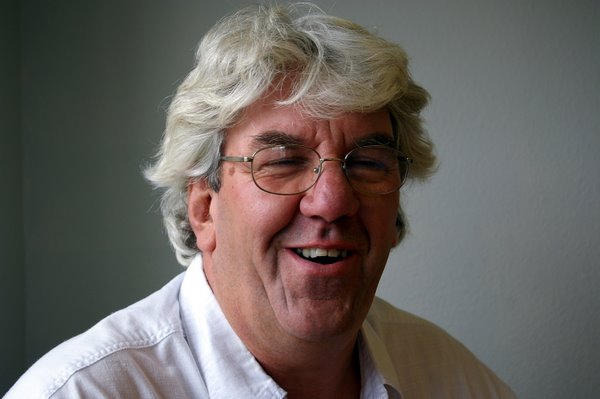
After
we tasted, we went off to lunch with Philippe Armenier (above),
who is Michael’s biodynamic consultant. Armenier lives in
California, but is originally from Provence, where he was the former
owner of Domaine Marcoux in Châteauneuf-du-Pape.
20 years ago, his wife gave him a book on Steiner. He was bored of
farming conventionally and was seeing a decline in the soil on his
property. He joined up with François Brochet who was just starting
his consulting business in 1989 to make his first biodynamic wines.
In 2001 he came to California, and now consults for a range of
producers in California, Oregon and Washington State, with over 1500
acres under his supervision.
Here's
a short video from the visit:
See also:
Wines tasted 07/08
Find these wines with wine-searcher.com
Back
to top
|

